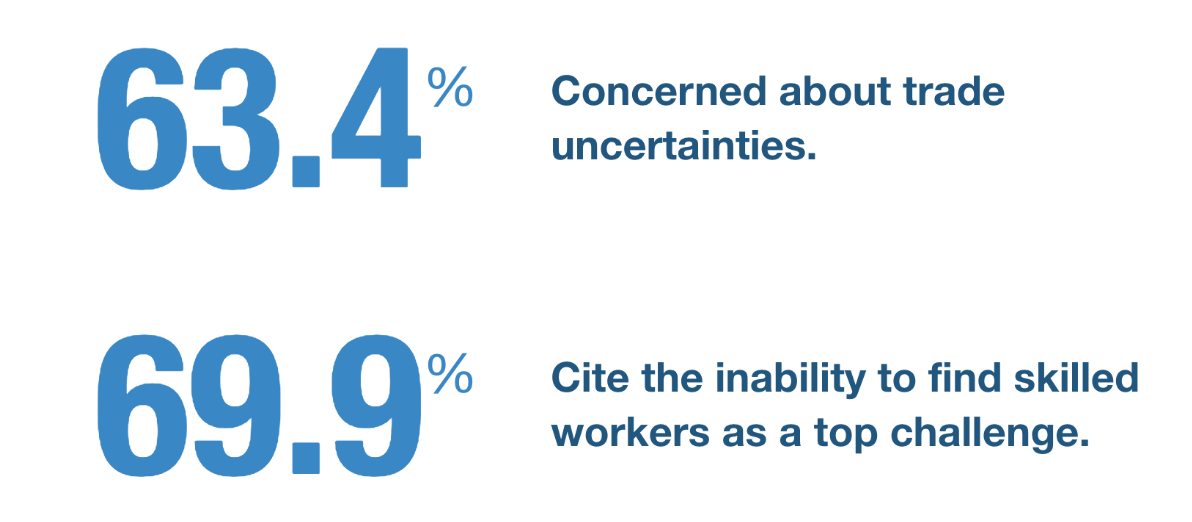Motion Waste Is a Significant Factor in Lean Manufacturing
One of the major waste types targeted by lean manufacturing practices is motion waste. Motion waste specifically refers to excessive motion of employees and equipment on a factory floor. Seemingly trivial excess motion can add up over time to generate significant inefficiencies—which can cost you.
Programmable machines can have motion waste designed into their behavior or layout. Perhaps a robotic arm swings in a longer arc than necessary or an automated conveyor system could be designed to make shorter runs between processing equipment. Human motion waste can be created when a worker has to sort through a stack of molds to find the right one or has to bend over repeatedly to adjust a control that’s out of reach.
Some motion in manufacturing is inevitable, of course, but excessive motion can cause serious problems. Excessive motion waste is often caused by inefficiencies in the layout of manufacturing facilities, but it can also be an issue at individual workstations and can put serious wear on both employees and machines.
Motion waste is detrimental to efficient production in a number of ways, from simply wasting time performing unnecessary motions to injuring workers and damaging machines. Any excessive movement, particularly in a non-ergonomic fashion, will physically wear out employees over time, potentially leading to injury.
At best, these injuries will lead to downtime as a result of having a worker out of commission. But at worst, injuries could potentially lead to lawsuits against the company, costing additional time and resources. Even machines and their components will experience wear and shortened life spans if excessive motion is an issue during the assembly or processing of products. This will inevitably also lead to downtime and repair costs.
Motion waste comes in many forms. For employees, motion waste varies from small movements at work stations to traveling across facilities. Any unnecessary movements that don’t add value and will be detrimental to efficiency are considered motion waste. A few examples to watch for are:
- Walking
- Reaching
- Lifting
- Lowering
- Bending
- Stretching
- Grasping
Solving the Motion Waste Problem
There are a number of ways to reduce motion waste, primarily relating to making factory and individual station layouts more efficient.
1. Rearrange Workspaces
The first way to decrease motion waste is to rearrange workspaces to have more efficient layouts. Moving equipment and materials needed for manufacturing processes closer together will go a long way to reduce motion and the time elapsed while retrieving materials.
For example, if there are several consecutive steps in a manufacturing process and each step requires specific tools, the tools should not be placed in opposite corners of the facility so that workers have to walk extended distances to complete each step. Tools and materials should be near where they will be needed so employees can access them quickly.
Tools and materials should be not only placed close to where they are needed but also arranged efficiently. If tools are stored on a shelving unit, the tools used most frequently should be stored in an accessible spot at arm’s reach, whereas tools that are less frequently used should be stored on higher or lower shelves.
Some motion will potentially be added when employees need to access the tools in harder-to-reach places. However, these events should be few and far between, leading to a net reduction of motion.
2. Establish Standard Operating Procedures (SOPs)
Creating standard operating procedures (SOPs) for manufacturing processes will also help employees reduce movement. If procedures are in place that identify every step, tool, and material needed to complete a task, employees will complete the task faster and, most importantly, with less wasted motion. SOPs should also include periodic equipment cleaning, preventing employees from wasting time and motion at times when they would normally be doing other work.
When creating or revising SOPs, it is crucial to gather employee input. They know best what would help increase efficiency and decrease motion on the facility floor.
3. Reduce Motion Waste by Getting Employee Input
Getting insights on wasted motion from employees is probably the fastest way to identify wasted motion. Employees work full-time at their stations and in the facility as a whole. Because they spend more time working in this environment than anyone else, logically, they should know where issues were within a facility.
One aspect of a holistic continuous improvement program is employee involvement. Employees often directly benefit from any reduction in wasted motion, so it makes sense to include them in the reduction process and invite them to contribute ideas.
Asking employees where they find themselves taking extra unnecessary steps will help pinpoint areas for improvement. Additionally, it’s a good idea to ask employees what they would change or prioritize about facility organization if they were in charge.
Persistence Pays Off
Solving motion waste is an ongoing process that is difficult to perfect, and there is almost always room for improvement. Minimizing movement and wear for employees and machines will go a long way to reduce downtime, prevent injury and repairs, and save money.
The implementation of any new program, such as continuous improvement or the adoption of lean manufacturing principles, takes some time, effort, and practice. It can be important to measure baseline manufacturing performance and then test manufacturing process improvements to determine if the KPI being measured has improved. Reducing motion waste should result in increased throughput, less downtime, fewer work-related injuries, and lower product costs.
Using a Smart Factory analytics tool like Worximity can help you quickly and efficiently gather accurate baseline data and measure improvements in your performance in real time.
Are you interested in tackling the eight wastes of lean manufacturing, including motion waste?
Download our Free Lean Manufacturing Industry 4.0. to understand how technology can help you reduce your waste and don't forget to subscribe to our blog, and you’ll get regular updates on lean manufacturing and related topics.









